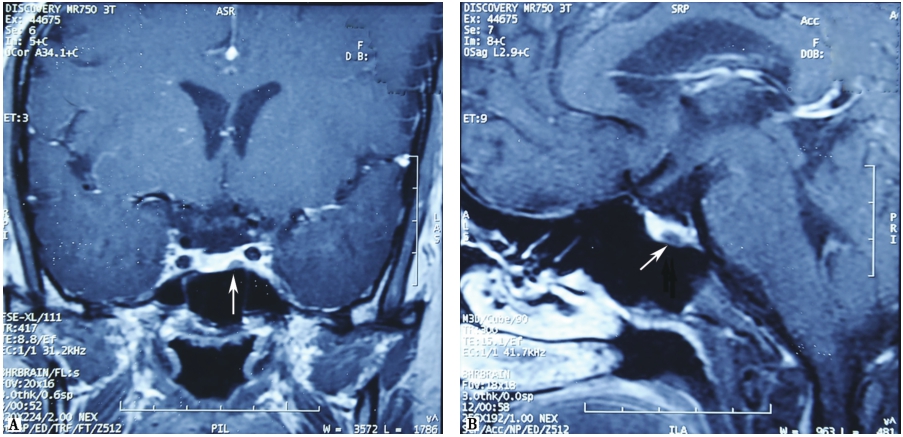赵明教授:肝癌介入治疗研究进展
原发性肝癌主要包括肝细胞癌(hepatocellular carcinoma,HCC)、肝内胆管细胞癌(intrahepatic cholangiocarcinoma,ICC)和肝细胞癌-肝内胆管细胞癌混合型三种病理类型,其中肝细胞癌占到85%~90%以上。全球范围内,每年HCC新增病例超过100万例,位居恶性肿瘤死亡原因第三位;而新发HCC患者中,55%发生在我国。HCC主要致病因素为乙型肝炎病毒(hepatitis B virus,HBV),丙型肝炎病毒(hepatitis C virus,HCV)感染、酒精、非酒精脂肪性肝炎(non-alcoholic steatohepatitis,NASH)、肥胖、糖尿病等引起的肝硬化。
我国肝癌患者80%发生于HBV感染,其他包括源于HCV感染、血吸虫肝炎、酒精性肝硬化和食物黄曲霉毒素污染等病因。由于肝癌起病隐匿,我国肝癌患者初诊时常为中晚期,多数患者已失去手术治疗机会。经动脉化疗栓塞(transarterial chemoembolization,TACE)治疗为不能手术的肝癌的首选治疗手段。其他经肝动脉治疗还包括经动脉灌注化疗(transarterial infusion,TAI)、经动脉栓塞(transarterial embolization,TAE)及选择性内放射治疗(selective internal radiation therapy,SIRT)。
一、传统TACE
传统TACE(conventional-TACE,C-TACE)是通过化疗药物同碘化油乳化后经肝动脉选择性或超选择性给药(肿瘤供血动脉)再联合使用颗粒栓塞剂如明胶海绵等栓塞动脉血管;研究报道C-TACE使用化疗药物及碘油混合乳化再同时联合栓塞较不加栓塞剂有更好的血液动力学效应、肿瘤坏死更加彻底、及更长的生存时间。目前C-TACE常用的药物为单药或联合用药,如阿霉素、表阿霉素及铂类,有学者报道去甲氧柔红霉素(idarubicin)是最为有效的药物,但目前我国各个介入中心使用的较少。2002年及2003年Llovet JM和Lo CM等的前瞻性随机对照研究均证明,与最佳支持治疗相比,C-TACE治疗能明显延长不能手术切除肝癌的生存期。随后临床系统回顾和Meta分析均显示,C-TACE治疗能明显提高不能手术切除肝癌,尤其是不伴门静脉受侵/癌栓患者的生存率。
Lencioni等多个对C-TACE治疗的系统复习及疗效评估显示:C-TACE客观反应率(objective response rate,ORR)为52.5%(95%CI 43.6%~61.5%),患者1、2、3、5年生存率分别为70.3%、51.8%、40.4%、32.5%,中位生存期为19.4个月。目前,TACE治疗已经被推荐为BCLC B期肝癌患者的首选治疗方法,最有效的治疗适应证主要是肝脏多结节型肝癌及不能手术切除的大肝癌,同时不合并有症状及癌栓及肝外转移。C-TACE的主要的不良反应及栓塞后综合征包括转氨酶升高(18.1%),发热(17.2%),骨髓和血液学毒性(13.5%),疼痛(11%),呕吐(6%)。急性肝功能不全是主要的死亡原因,约占0.6%。最近的随机对照临床试验结果显示,TACE后连续3天使用糖皮质激素联合止呕药物较单纯使用止呕药能明显减少栓塞后综合征的发生,临床使用安全方便,但仍然需要外部验证。
二、载药微球TACE
提高TACE的临床治疗效果主要依靠提高靶病灶内有效的血药浓度及减少对正常肝脏和系统的化疗药物暴露所致的毒性反应,同时联合更加有效及合适直径的栓塞剂栓塞动脉血管。载药微球TACE又称药物洗脱微球TACE(drug-eluting beads TACE,D-TACE),它通过微球吸附化疗药物在肿瘤内释放,同时微球本身亦可将肿瘤血管永久性闭塞。Ⅱ临床研究结果显示,D-TACE相比于C-TACE,其优势在于减少全身的药物毒性和提高影像评价的肿瘤ORR,对B期中肝功能Child-Pugh B级和PS评分1分以上、左右叶肝脏均存在肿瘤的情况更具有优势,但两组的总体的OS无显著的统计学差异。临床工作中,D-TACE在全国各个中心均有不同程度的开展,实际运用中要注意超选择肿瘤供血动脉进行栓塞,注意动脉及静脉瘘的存在所致的异位栓塞,载药微球每次只载一种药物治疗,同时价格较高,要根据患者的总体评价使用。目前,运载药物也有很大变化,如使用伊立替康、奥沙利铂等载药微球在转移性肿瘤中如结直肠癌肝转移也有广泛运用,未来会有更多的除HCC以外的转移性肿瘤临床研究结果的出现。
三、TACE治疗方案
目前仍然没有明确的数据表明规律性TACE是否较按需TACE治疗更具有优势,规律性的给药(如1~2个月一次)会明显加重肝功能的损害甚至肝脏功能衰竭。实际工作中要判断是否继续TACE治疗,要根据影像学判断是否有肿瘤残留及肝功能状况等决定。在TACE治疗后,评价肿瘤未能有效控制或出现新发病灶,是否适合再次TACE治疗有多个评分系统去分析判断,目前原则上难以统一,可以结合临床的实际肝功能情况分析。但经过2次TACE治疗后发现肿瘤仍有活性或第一次TACE治疗后有靶病灶的肿瘤虽出现坏死,但第二次TACE治疗肿瘤未能有效控制,则需要终止TACE治疗。如果临床上出现肿瘤进展,超出介入治疗的适应证范围,如肝癌肝外广泛进展等也需要终止TACE治疗。定义不能进行TACE治疗的HCC进展包括:广泛的肝内转移、肝外转移、血管侵犯,如合并有肝脏功能的严重受损、体能评分下降;药物的毒性,如蒽环类药物的所致的心脏毒性,累计剂量450mg/m2。OPTIMIS研究旨在真实世界中评估接受TACE治疗的HCC患者后给予或不给予索拉非尼的治疗结果,在接受TACE治疗的人群中(N=1650),首次TACE后的CR和PR分别为14%和26%,第二次TACE后降低(分别为10%和16%;N=1002),第三次TACE后更低(分别为10%和14%;N=580),第四次后最低(分别为8%和17%;N=338)。疾病进展率随着TACE次数增多而升高,从第一次到第四次TACE分别为18%、21%、25%和27%,真实世界中,患者在不适合TACE治疗后,仍然使用TACE治疗,而且通常并没有进行全身治疗,且全身治疗启动时间也存在差异。
四、TAE
经肝动脉栓塞治疗,4项Meta分析显示TACE对比TAE,所有结果显示OS在两组之间无统计学差异,最近的随机对照研究也显示TACE及TAE两组在肿瘤ORR、PFS、OS上无统计学差异,但其中一半以上的入组患者为晚期肝癌,限制其结果的可信度。而在中期肝癌中很少有单独使用TAE的报道。因此,目前不能判断中期肝癌中TACE是否较TAE更有优势。
五、TACE联合消融治疗
在肝内肿瘤直径超过3cm时,TACE联合RFA(radio-frequency ablation)较单独使用可以更好的提高患者OS和无复发生存期,而且在主要并发症方面无显著的统计学差异。
六、TACE联合抗血管生成治疗
TACE治疗后局部肿瘤坏死及缺氧微环境的存在,激活缺氧诱导因子(hypoxia-inducible factors,HIFs)和增加VEGF(vascular endothelial growth factor)的表达。TACE联合抗血管生成治疗改善患者的预后理论上为有效的策略。索拉非尼作为血管内皮生长抑制剂的多靶点药物已经广泛使用在与TACE联合上,包括TACE联合索拉非尼的SPACE、TACE-2研究中,但研究结果未能提高患者总的OS;Brivanib(布尼利布)作为选择性的VEGFR及FGF信号双通路的抑制剂,联合TACE在BRISK-TA的研究中,也未能显著提高TACE患者的总生存期。对于无法切除的肝细胞癌,Orantinib是一种口服多激酶抑制剂,有效作用于PDGFR自磷酸化,在ORIENTAL研究中,C-TACE联合Orantinib与单独C-TACE比较也未显著改善患者OS。以上研究均未能得出阳性结论。为中期肝癌是否要联合抗血管生成治疗带来很大的阻力,其中原因有多个方面,包括药物联合的模式,对于肝内进展的判断出现进展后是否要继续行TACE治疗及抗血管生成治疗存在不同观点。2018ASCO GI报道的TACTICS研究:比较经导管动脉化学栓塞TACE治疗联合索拉非尼,与单纯TACE治疗肝细胞癌患者的随机、开放性、多中心Ⅱ期研究,不可切除、多结节HCC,Child-Pugh A,无腹水或肝性脑病,ECOG PS=0;协同主要终点为PFS/OS,次要终点为TTUP(无法TACE的进展)、TTP、ORR、安全性。与单纯TACE治疗相比,TACE联合索拉非尼显著改善PFS,TACE联合索拉非尼与单独TACE组比较,PFS分别为25.2个月、13.5个月(HR 0.59,95% CI 0.41~0.87),P=0.006;TTUP 26.7个月、20.6个月(HR 0.57,95% CI 0.36~0.92),P=0.02,研究终点OS还没有结论。该研究较以前联合研究所不同的是,发现在TACE联合治疗组中能显著提高患者PFS及TTUP,新发肝内病灶不应被视为疾病进展/研究终止规则(疾病进展判断不同也可能是研究成功的关键因素),起始索拉非尼400mg/d治疗,降低药物的不良反应,提高整体入组患者的依从性。TACTICS研究明确表明,TACE联合索拉非尼是一种可改善临床结局的治疗选择,并可能成为中期HCC患者的标准治疗方案。
七、选择性内放射治疗
选择性内放射治疗(selective internal radiation therapy,SIRT)也称为放射性栓塞化疗(radioemboliztion),是局部治疗肝癌的一种有效方法,包括铱-90微球(Y90)、放射性131I标记的碘化油,经肝动脉灌注入肝内肿瘤区域,持续产生β射线等,但治疗前需要运用99Tc标记的白蛋白分析,肿瘤内部剂量分布、正常肝脏的剂量暴露计量、是否存在动静脉瘘等。SIRT对于中期肝癌使用SIRT治疗的平均生存期达到17.2个月,其次的优势在进展期肝癌合并门静脉癌栓的情况下仍然可以使用,进展期肝癌合并门静脉癌栓的患者生存期为10~12个月,ORR报道35%~50%,20%患者合并肝脏毒性,治疗相关性死亡率3%左右。同C-TACE比较,有一些回顾性报道显示SIRT具有更低的毒性,显著延长患者的TTP及肿瘤局部空置率、有更好的生活质量,但患者的生存期同目前C-TACE治疗无显著差别。考虑到防护及介入操作上有一定的特殊性限制其在临床上的使用,目前在国内也未能有效的推广。
2项采用优效性设计的随机对照临床试验比较了SIRT与索拉非尼在晚期肝癌中应用的安全性和有效性,在意向人群及治疗方案集中显示两组生存无明显统计学差异,但肿瘤的ORR上SIRT更好。其中SIRveNIB研究显示PFS和TTP,在SIRT组有显著的延长;在SARAH研究中索拉非尼组3级及以上的不良反应发生率是SIRT的两倍。头对头的SIRT研究如SORAMIC(SIRT对比索拉非尼),STOP-HCC(Y90微球联合索拉非尼对比单独使用索拉非尼)等多个临床研究在进行中。
八、TACE的其他治疗适应证
TACE虽然为中期肝癌的标准治疗,但在真实世界中40%的TACE使用在早期肝癌和部分进展期肝癌,显示其在临床实践中的广泛性和作为HCC治疗的重要治疗手段。肝移植、肝切除、消融前作为等待期使用TACE,减少HCC的进展,在美国约有70%肝移植的患者接受TACE治疗。一项前瞻性实验研究比较有门静脉癌栓的患者接受TACE治疗对比传统的保守治疗,OS分别为7.1和4.1个月,两组有显著的统计学差异,提示进展期肝癌治疗有效性,因此对于进展期肝癌仍然可以使用TACE治疗,但真实世界中主要是运用在经过选择的患者中,如肝内肿瘤负荷相对较轻的缓则,国内目前TACE治疗的现状也类似于其他国家,特别在进展期肝癌中也广泛使用。
参考文献
[1] Akinyemiju T,Abera S,Ahmed M,et al. The Burden of Primary Liver Cancer and Underlying Etiologies From 1990 to 2015 at the Global,Regional,and National Level:Results From the Global Burden of Disease Study 2015[J]. JAMA Oncol,2017,3(12):1683-1691.
[2] Elserag H B. Epidemiology of viral hepatitis and hepatocellular carcinoma[J]. Gastroenterology,2012,142(6):1264-1273.
[3] Torre L A,Bray F,Siegel R L,et al. Global cancer statistics,2012[J]. CA Cancer J Clin,2015,65(2):87-108.
[4] Chen W,Zheng R,Baade P D,et al. Cancer statistics in China,2015[J]. CA Cancer J Clin,2016,66(2):115-132.
[5] Llovet JM, Bruix J. Systematic review of randomized trials for unresectable hepatocellular carcinoma:chemoembolization improves survival[J]. Hepatology,2003,37(2):429-442.
[6] Llovet J M,Real M I,Montaña X,et al. Arterial embolisation or chemoembolisation versus symptomatic treatment in patients with unresectable hepatocellular carcinoma:a randomised controlled trial[J]. Lancet,2002,359(9319):1734-1739.
[7] Lo C,Ngan H,Tso W,et al. Randomized controlled trial of transarteriallipiodol chemoembolization for unresectable hepatocellular carcinoma[J]. Hepatology,2002,35(5):1164-1171.
[8] Raoul J L,Sangro B,Forner A,et al. Evolving strategies for the management of intermediate-stage hepatocellular carcinoma:available evidence and expert opinion on the use of transarterialchemoembolization[J]. Cancer Treat Rev,2011,37(3):212-220.
[9] Forner A,Gilabert M,Bruix J,et al. Treatment of intermediate-stage hepatocellular carcinoma[J]. Nat RevClinOncol,2014,11(9):525-535.
[10] Mazzaferro V,Sposito C,Bhoori S,et al. Yttrium-90 radioembolization for intermediate-advanced hepatocellular carcinoma:a phase 2 study[J]. Hepatology,2013,57(5):1826-1837.
[11] Wang X,Hu Y,Ren M,et al. Efficacy and Safety of Radiofrequency Ablation Combined with Transcatheter Arterial Chemoembolization for Hepatocellular Carcinomas Compared with Radiofrequency Ablation Alone:A Time-to-Event Meta-Analysis[J]. Korean JRadiol,2016,17(1):93-102.
[12] Joong-Won P,Chen M,Massimo C,et al. Global patterns of hepatocellular carcinoma management from diagnosis to death:the BRIDGE Study[J]. Liver Int,2015,35(9):2155-2166.
[13] Sangro B,D’Avola D,Iñarrairaegui M,et al. Transarterial therapies for hepatocellular carcinoma[J]. JHepatol,2011,12(7):1057-1073.
[14] Sangro B,Salem R. Transarterial chemoembolization and radioembolization[J]. Semin Liver Dis,2014,34(4):435-443.
[15] De B T,Arai Y,Lencioni R,et al. Treatment of Liver Tumors with Lipiodol TACE:Technical Recommendations from Experts Opinion[J]. CardiovascInterventRadiol,2016,39(3):334-343.
[16] Takayasu K,Arii S,Ikai I,et al. Overall survival after transarteriallipiodol infusion chemotherapy with or without embolization for unresectable hepatocellular carcinoma:propensity score analysis[J]. AJR Am J Roentgenol,2010,194(3):830-837.
[17] Lencioni R,De B T,Soulen M C,et al. Lipiodoltransarterial chemoembolization for hepatocellular carcinoma:A systematic review of efficacy and safety data[J]. Hepatology,2016,64(1):106-116.
[18] Boulin M,Schmitt A,Delhom E,et al. Improved stability of lipiodol-drug emulsion for transarterialchemoembolisation of hepatocellular carcinoma results in improved pharmacokinetic profile:Proof of concept using idarubicin[J]. EurRadiol,2016,26(2):601-609.
[19] Cammã C,Schepis F,Orlando A,et al. Transarterial chemoembolization for unresectable hepatocellular carcinoma:meta-analysis of randomized controlled trials[J]. Radiology,2002,224(1):47-54.
[20] Oliveri R S,Wetterslev J,Gluud C et al. Transarterial(chemo)embolisation for unresectable hepatocellular carcinoma[J]. Cochrane Database Syst Rev,2011,66(3):CD004787.
[21] Ogasawara S,Chiba T,Ooka Y,et al. A Randomized Placebo-Controlled Trial of Prophylactic Dexamethasone for Transcatheter Arterial Chemoembolization[J]. Hepatology,2018.
[22] Varela M,Real MI,Burrel M,et al. Chemoembolization of hepatocellular carcinoma with drug eluting beads:efficacy and doxorubicin pharmacokinetics[J]. J Hepatol,2007,46(3):474-481.
[23] Lammer J,Malagari K,Vogl T,et al. Prospective Randomized Study of Doxorubicin-Eluting-Bead Embolization in the Treatment of Hepatocellular Carcinoma:Results of the PRECISION V Study[J]. CardiovascInterventRadiol,2010,33(1):41-52.
[24] Golfieri R,Giampalma E,Renzulli M,et al. Randomised controlled trial of doxorubicin-eluting beads vs conventional chemoembolisation for hepatocellular carcinoma[J]. Br J Cancer,2014,111(2):255-264.
[25] Gao S,Yang Z,Zheng Z,et al. Doxorubicin-eluting bead versus conventional TACE for unresectable hepatocellular carcinoma:a meta-analysis[J]. Hepatogastroenterology,2013,60(124):813.
[26] Monier A,Guiu B,Duran R,et al. Liver and biliary damages following transarterial chemoembolization of hepatocellular carcinoma:comparison between drug-eluting beads and lipiodol emulsion[J]. EurRadiol,2016,27(4):1-9.
[27] Silva J P,Berger N G,Tsai S,et al. Transarterial chemoembolization in hepatocellular carcinoma with portal vein tumor thrombosis:a systematic review and meta-analysis[J]. HPB (Oxford),2017,19(8):659-666.
[28] Sieghart W,Hucke F,Pinter M,et al. The ART of decision making:retreatment with transarterial chemoembolization in patients with hepatocellular carcinoma[J]. Hepatology,2013,57(6):2261-2273.
[29] Hucke F,Sieghart W,Pinter M,et al. The ART-strategy:sequential assessment of the ART score predicts outcome of patients with hepatocellular carcinoma re-treated with TACE[J]. JHepatol,2014,60(1):118.
[30] Adhoute X,Penaranda G,Naude S,et al. Retreatment with TACE:The ABCR SCORE,an aid to the decision-making process[J]. J Hepatol,2015,62(4):855-862.
[31] Peng Z W,Zhang Y J,Chen M S,et al. Radiofrequency ablation with or without transcatheter arterial chemoembolization in the treatment of hepatocellular carcinoma:a prospective randomized trial[J]. J ClinOncol,2013,31(4):426-432.
[32] Lencioni R,Llovet J M,Han G,et al. Sorafenib or placebo plus TACE with doxorubicin-eluting beads for intermediate stage HCC:The SPACE trial[J]. J Hepatol,2016,64(5):1090-1098.
[33] Chao Y,Chung Y,Han G,et al. The combination of transcatheter arterial chemoembolization and sorafenib is well tolerated and effective in Asian patients with hepatocellular carcinoma:Final results of the START trial[J]. Int J Cancer,2015,136(6):1458.
[34] Meyer T,Fox R,Ma Y T,et al. Sorafenib in combination with transarterialchemoembolisation in patients with unresectable hepatocellular carcinoma(TACE 2):a randomised placebo-controlled,double-blind,phase 3 trial.[J]. Lancet GastroenterolHepatol,2017.
[35] Kudo M,Han G,Finn R S,et al. Brivanib as adjuvant therapy to transarterial chemoembolization in patients with hepatocellular carcinoma:A randomized phase 3 trial[J]. Hepatology,2014,60(5):1697-1707.
[36] Kudo M,Cheng A L,Park J W,et al. Orantinib versus placebo combined with transcatheter arterial chemoembolisation in patients with unresectable hepatocellular carcinoma(ORIENTAL):a randomised,double-blind,placebo-controlled,multicentre,phase 3 study[J]. Lancet GastroenterolHepatol,2017,3(1):37.
[37] Marelli L,Stigliano R,Triantos C,et al. Transarterial therapy for hepatocellular carcinoma:which technique is more effective? A systematic review of cohort and randomized studies[J]. CardiovascInterventRadiol,2007,30(1):6-25.
[38] Xie Z B,Ma L,Wang X B,et al. Transarterial embolization with or without chemotherapy for advanced hepatocellular carcinoma:a systematic review[J]. TumourBiol,2014,35(9):8451-8459.
[39] Meyer T,Kirkwood A,Roughton M,et al. A randomised phase Ⅱ/Ⅲ trial of 3-weekly cisplatin-based sequential transarterialchemoembolisationvsembolisation alone for hepatocellular carcinoma[J]. Br J Cancer,2013,108(6):1252.
[40] Brown K T,Do R K,Gonen M,et al. Randomized Trial of Hepatic Artery Embolization for Hepatocellular Carcinoma Using Doxorubicin-Eluting Microspheres Compared With Embolization With Microspheres Alone[J]. J ClinOncol,2016,34(17):2046-2053.
[41] Pomfret E A,Washburn K,Wald C,et al. Report of a national conference on liver allocation in patients with hepatocellular carcinoma in the United States[J]. Liver Transpl,2010,16(3):262-278.
[42] Bargellini I,Florio F,Golfieri R,et al. Trends in utilization of transarterial treatments for hepatocellular carcinoma:results of a survey by the Italian Society of Interventional Radiology[J]. CardiovascInterventRadiol,2014,37(2):438-444.
[43] Terzi E,Golfieri R,Piscaglia F,et al. Response rate and clinical outcome of HCC after first and repeated cTACE performed “on demand”[J]. J Hepatol,2012,57(6):1258-1267.
[44] Raoul J,Guyader D,Bretagne J,et al. Prospective randomized trial of chemoembolization versus intra-arterial injection of 131I-labeled-iodized oil in the treatment of hepatocellular carcinoma[J]. Hepatology,1997,26(5):1156-1161.
[45] Kulik L M,Carr B I,Mulcahy M F,et al. Safety and efficacy of 90Y radiotherapy for hepatocellular carcinoma with and without portal vein thrombosis[J]. Hepatology,2008,47(1):71-81.
[46] Salem R,Lewandowski R J,Mulcahy M F,et al. Radioembolization for hepatocellular carcinoma using Yttrium-90 microspheres:a comprehensive report of long-term outcomes[J]. Gastroenterology,2010,138(1):52-64.
[47] Sangro B,Carpanese L,Cianni R,et al. Survival after yttrium-90 resin microsphere radioembolization of hepatocellular carcinoma across Barcelona clinic liver cancer stages:a European evaluation[J]. Hepatology,2011,54(3):868-878.
[48] Hilgard P,Hamami M,Fouly A E,et al. Radioembolization with yttrium-90 glass microsphres in hepatocellular carcinoma:European experience on safety and long-term survival[J]. Hepatology,2010,52(5):1741-1749.
[49] Rita G,Josè Ignacio B,Livio C,et al. Comparison of the survival and tolerability of radioembolization in elderly vs. younger patients with unresectable hepatocellular carcinoma[J]. J Hepatol,2013,59(4):753-761.
[50] Luo J,Guo R P,Lai E C H,et al. Transarterial Chemoembolization for Unresectable Hepatocellular Carcinoma with Portal Vein Tumor Thrombosis:A Prospective Comparative Study[J]. Ann Surg Oncol,2011,18(2):413-420.
赵明
教授、博士生导师,中山大学附属肿瘤防治中心主任医师,中国抗癌协会肿瘤介入学专业委员会委员,中国临床肿瘤学会(CSCO)肝癌专家委员会委员,广东省中西医结合肿瘤专业委员会副主任委员,广州抗癌协会肿瘤微创治疗专业委员会副主任委员兼秘书,广东省健康管理协会介入专委会副主任委员。
来源:人民卫生出版社《临床知识》约稿
作者:赵明教授,中山大学附属肿瘤防治中心主任医师;李少龙,吕宁,穆鲁文
编辑:环球医学资讯丁好奇
- 评价此内容




 3我要打分
3我要打分
近期推荐
热门关键词
最新会议
- 2013循证医学和实效研究方法学研讨会
- 欧洲心脏病学会年会
- 世界帕金森病和相关疾病2013年会议
- 英国介入放射学学会2013年第25届年会
- 美国血液学会2013年年会
- 美国癫痫学会2013年第67届年会
- 肥胖学会 2013年年会
- 2013年第9届欧洲抗体会议
- 国际精神病学协会 2013年会议
- 妇科肿瘤2013年第18届大会
- 国际创伤压力研究学会2013年第29届…
- 2013年第4届亚太地区骨质疏松症会议
- 皮肤病协会国际2013年会议
- 世界糖尿病2013年大会
- 2013年国际成瘾性药年会
- 彭晓霞---诊断试验的Meta分析
- 武姗姗---累积Meta分析和TSA分析
- 孙凤---Network Meta分析
- 杨智荣---Cochrane综述实战经验分享
- 杨祖耀---疾病频率资料的Meta分析
合作伙伴
Copyright g-medon.com All Rights Reserved 环球医学资讯 未经授权请勿转载!
网络实名:环球医学:京ICP备08004413号-2
关于我们|
我们的服务|版权及责任声明|联系我们
互联网药品信息服务资格证书(京)-经营性-2017-0027
互联网医疗保健信息服务复核同意书 京卫计网审[2015]第0344号




 会员登录
会员登录

